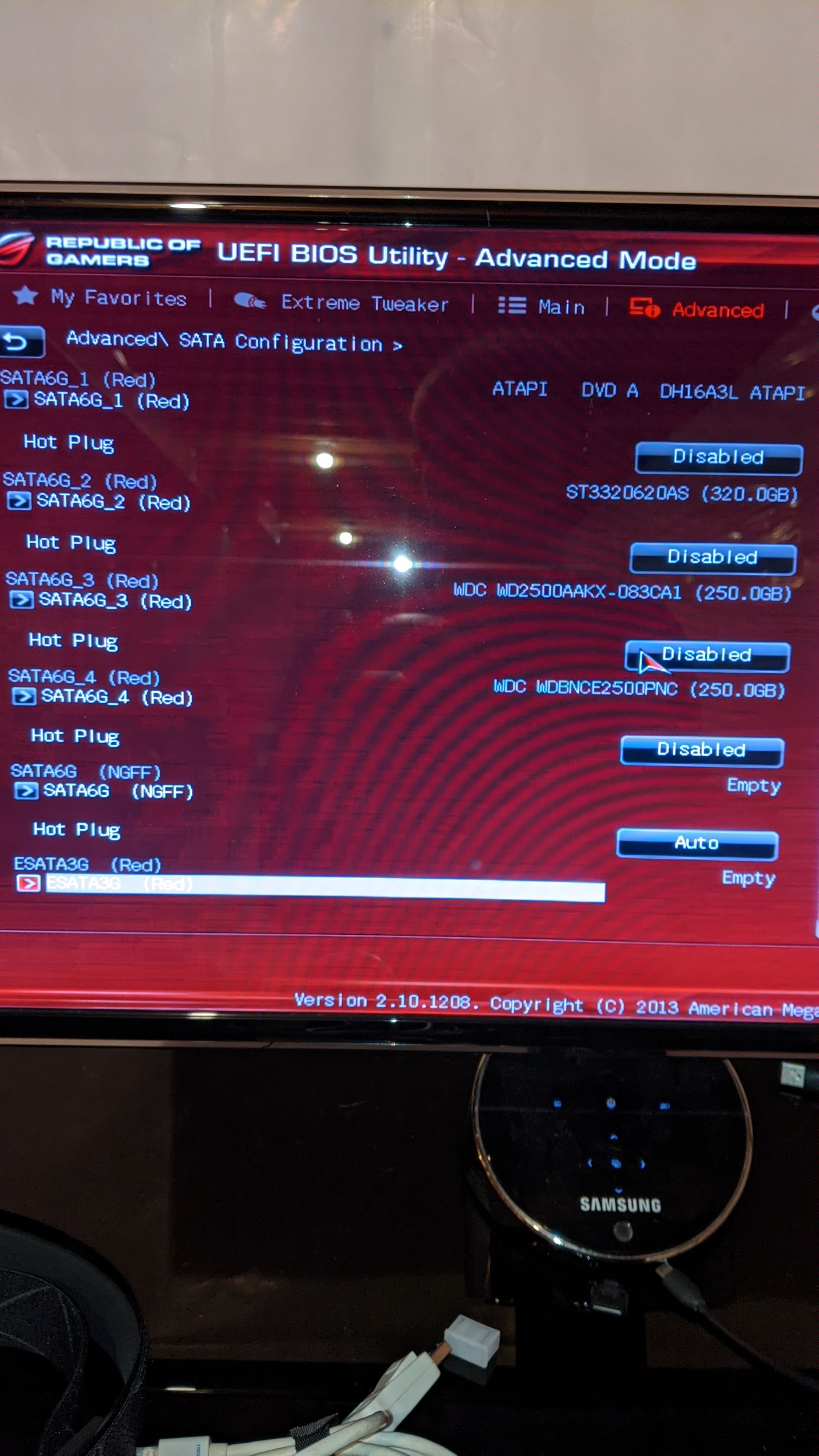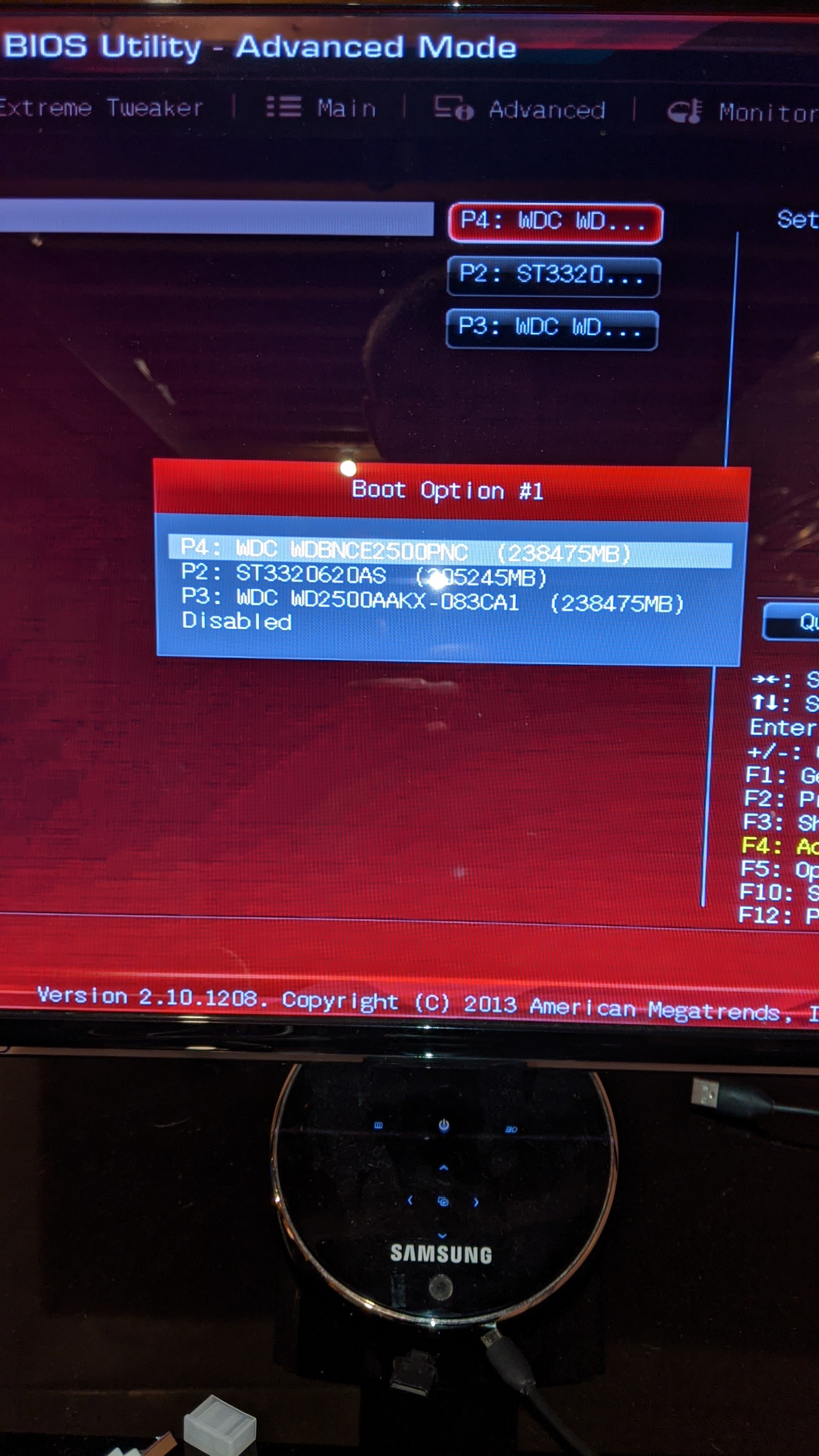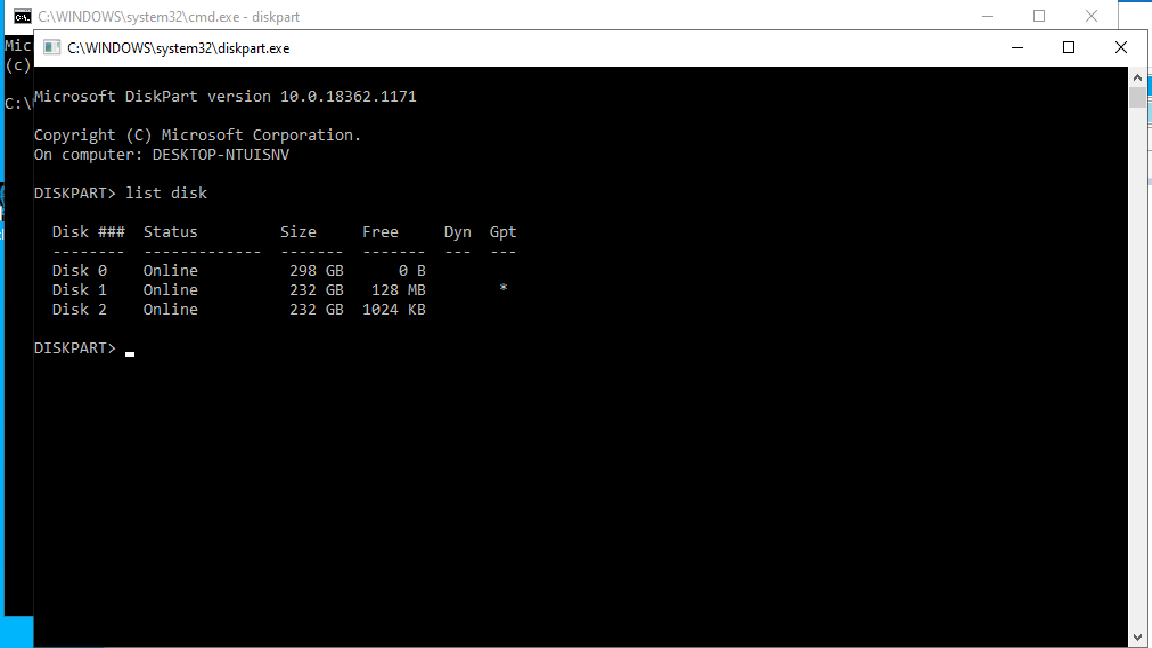Hi I have a Asus Maximus VI Impact. Upon inserting my Samsung 970 EVO 1tb in the M2 slot is that the bios is not detecting it and nor is it detected in windows. I have tried the modded bios software M6I.cap file in another post with no success using the flashback function on my board. I have tried 2 NVMe’s as well which did not change results. The bios software did flash successfully.
Is there anyway Someone could mod the latest version bios software for my motherboard to accept the 970 EVO? Thanks.
.
Latest bios software is in this link "asus.com/us/Motherboards/MAXIMUS_VI_IMPACT/HelpDesk_BIOS"
Forum post that claimed to fix issue for my motherboard is “win-raid.com/t4577f44-OFFER-MAXIMUS-VI-IMPACT-v-compl-mod.html”
@Mischif - That user knows how to properly mod BIOS, so there should be no issue with your NVME. I suggest you use BIOS in post #28 (last update he made)
Are you 100% sure your mod BIOS flashed in while using USB Flashback?? Not all USB are compatible, LED should flash on button or USB itself if there is LED, getting faster and faster for a full minute or so, then it will stop and remain on or off (can’t remember)
If it only flashes once or twice and stays off or solid on, then USB is not compatible, or file not found due to not in correct format, not in root of USB, or USB not compatible or configured correctly.
USB Should be initialized as MBR, formatted at FAT or FAT32, and smaller older = better (128KB-2Gb is best). If you can rename stock BIOS, and flash it via USB Flashback, and see the LED’s function properly as described above, then the USB is compatible as you have it, and mod BIOS would properly flash in.
You will not see NVME in BIOS after flash, only “PATA” or “PATA SS”, until you install windows, then you will see it as "Windows Boot Manager"
You need to follow all steps at #4 in the “Installation of the OS onto the NVMe SSD:” section of this guide - [Guide] How to get full NVMe support for all Systems with an AMI UEFI BIOS
To install windows, USB must be GPT initilized, or setup with windows USB/DVD tool, and NVME must be GPT initialized, or RAW. CSM must be disabled in BIOS as well
Here’s how to make NVME RAW (suggested) - You can use diskpart in windows from OS (Direct from any CMD Prompt), or from installer ISO (press Shift + F10 on the first setup screen where you pick language)
Or from repair/troubleshoot options in the installer/setup. Remove all other drives, so you have only USB and target win10 drive. Then from CMD prompt do the following
1. Diskpart
2. List Disk << Here, identify what your target disk is by size/name etc, and make note of it’s #, you will use it’s # next - (If in windows, these #'s will match what you see the drives shown as in Disk Management) - Be sure you do not select your USB or main OS drive if in OS
3. select disk # << Here, instead of #, put target disk #, example >> select disk 0
4. clean
5. Exit
Reboot and run the installer again, then point it at the raw/blank drive, do not load any drivers or create any partitions etc, just select drive and click next
If all fails still, and you can USB Flashback properly, let me know and I will make NVME mod BIOS only with lastest BIOS
I was not accusing anyone of their integrity at all. I was just wanting to reference everything I had tried for the fastest possible help with fixing my issue. I assume the fix .cap was loaded onto all prior posts in that thread but I even downloaded the .cap from the 3rd page of the post with no success.
Yes I’m sure the flashback took successfully. I used a 4gb USB formatted to FAT32. It blinked between 1 minute to 2 minutes ranging from slow blinking to faster then eventually to off.
Attached are pictures of the BIOs showing no “PATA” or “PATA SS”. Also attached is a screen shot using diskpart > list disk which is showing no other drives other than the ssd, hdd, and hdd that i already have installed.



No, I didn’t think that, I was just commenting that he knows how to edit BIOS, so you knew.
But, yeah, I did see the issues in that thread, and it’s older too, so maybe initial edits was done while back, before he knows as much as he does now
Sounds like flashback is working for you then, the way you describe it acting is proper, so we’ll assume mod BIOS is flashing in 
First image, is not correct place to look for PATA, second place is where you will find it 
What OS is this? If Win10, and none of those three drives shown in diskpart are your NVME (and you can tell by size), then there is a problem with your adapter or the NVME is faulty.
First, if you are using onboard NVME slot, read manual, sometimes certain slots (SATA Ports I mean) will be disabled if you use NVME onboard M2 slot.
Ohh!! Also, sorry, this onboard M2 slot is possibly NOT compatible with NVME, I can’t remember if Z87 M2 slots are or not?
Also, it would be PCIE 2.0 x1 speed = SUPER SLOT, best to use PCIE adapter into PCIE slot and use onboard graphics, or stick with SSD
I suggest you pickup a cheap $5 PCIE adapter to use, here is an example - https://www.amazon.com/JacobsParts-Adapt…t/dp/B07PYHVXJS
Also, test this NVME on another known NVME compatible system, because it should show up in OS if Win10 OS, without anything at all done to BIOS (That is only so you can boot from it)
Can you see the drive in device manager, or Disk Management?
Ahh! I see the issue, this board does not support proper/common/modern NVME Standard I think! Not sure if 970 will run at x1? That slot is spec’d as quoted below from the Asus spec list
"Support M.2 (NGFF) Type 2242/2260/2280/22110 SSD card (up to 110mm in length), support PCI express 2.0 x1 and SATA 6Gb/s standards"
Read comments here by @Pyves - [Guide] How to get full NVMe support for all Systems with an AMI UEFI BIOS (119)
He tested a few drives with this board and mod BIOS, no dice, and he assumed same as I said above about PCIE 2.0 x1 speed (that would be much slower than normal SATA 3Gbs speed anyway, you don’t want this)
If you insist though, for testing, I will make you a fresh BIOS with NVME Mod only, let me know?
* Edit - Actually, here you go, I made real quick just in case you want to test it out.
I would not advise even considering using a NVME at PCIE 2.0 x1, that will be a waste of NVME and much slower than SSD even, maybe slower than HDD
Now, if you put it on adapter like I linked above, and use the PCIE slot, it will work great, at full PCIE 3.0 x4 speed 
http://s000.tinyupload.com/index.php?fil…381804298894599
Yes the operating system is windows 10. Unfortunately the only PCI slot I have on my board is a x16 slot due to it being an ITX board which I have my GPU in since I mainly use my computer for gaming and cannot use an adapter for the NVMe.
I do not have another computer around that supports NVMe use. It’s kind of just sounding like I will end up just returning the current NVMe and just using SATA SSD’s for my best bet.
I flashed the bios mod you had given me with no success. There is no PATA listed inside the bios after flash nor is it listed in the disk list of diskpart. I’ll just have to face the fact that my board is too old to support new age technology. If only my board had that extra slot for the adapter!
I do appreciate you taking the time to try and help me. This forum honestly seems like it’s full of actual help.
@Mischif - Yes, I looked at the board image, that’s why I said use onboard graphics, or SSD instead.
Yes, I would advise you return this NVME or use it on some other system, or resell it, keep for later etc. There’s no way to use it properly on this board without using it in the PCIE slot.
This board will support NVME, but it will only be ideal, and due to x1, may only be functional at all, in the PCIE slot.
Or, it may not be showing in windows/BIOS due to faulty NVME, I cannot be sure on this if x1 speed causes failure to start the device, or if it’s faulty.
You would need the $5 adapter I mentioned, and to test in the PCIE x16 slot before you would know for sure if the NVME is faulty or not.
If it’s working, and being started, then even without BIOS mod you would see it in device manager and diskpart
You’re welcome, sorry the answers are not ideal
Maybe time for new motherboard and CPU?? LGA1200 boards are cheap, and you can even get 4C/8T CPU (that goes to above 4Ghz by default) for around $100 now too 

